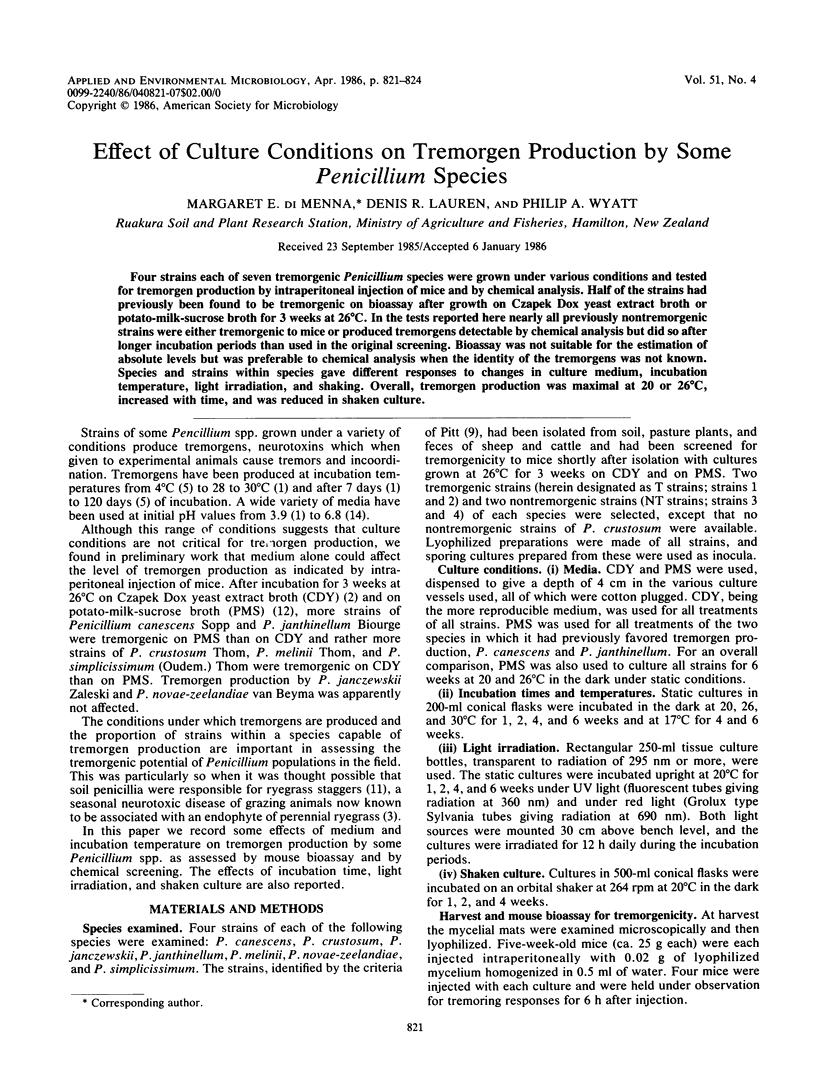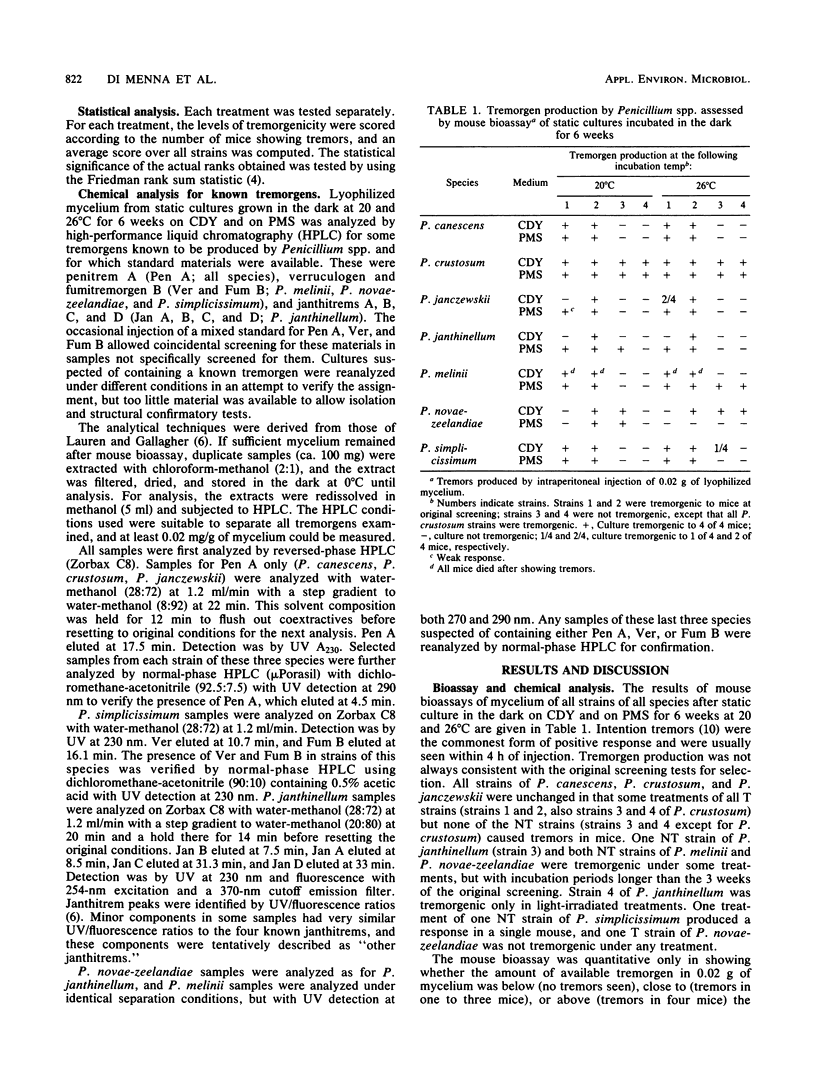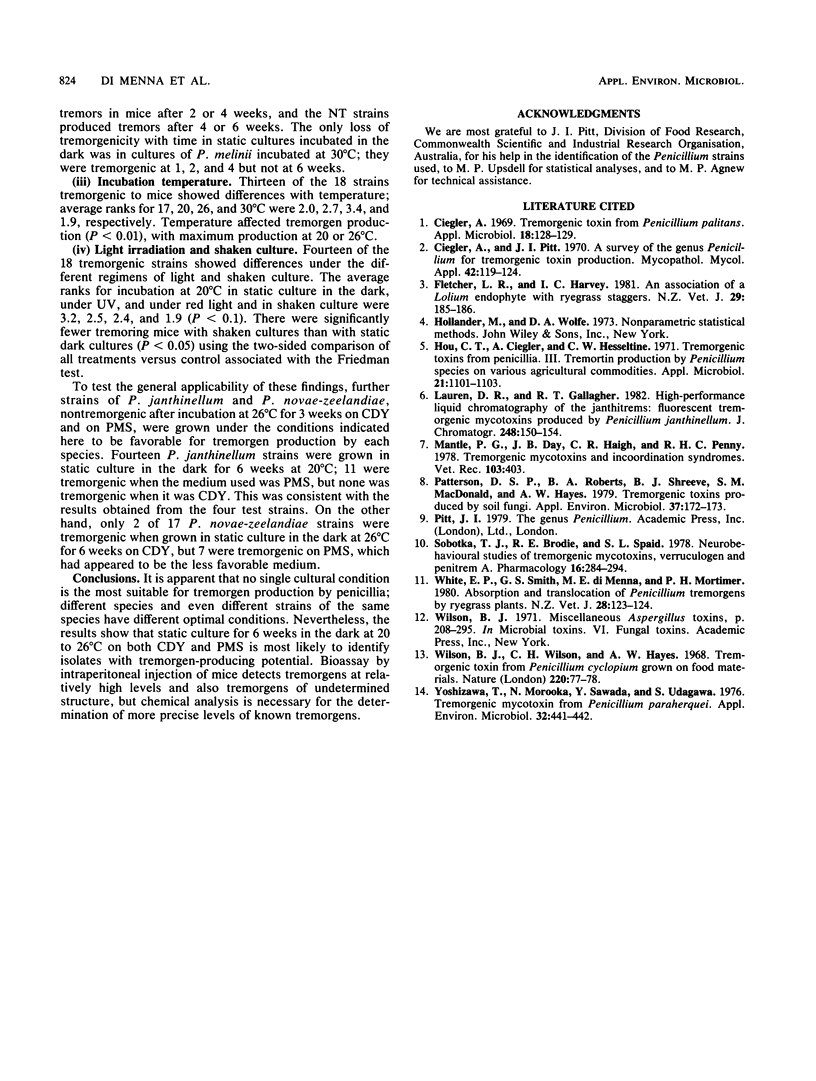Abstract
Four strains each of seven tremorgenic Penicillium species were grown under various conditions and tested for tremorgen production by intraperitoneal injection of mice and by chemical analysis. Half of the strains had previously been found to be tremorgenic on bioassay after growth on Czapek Dox yeast extract broth or potato-milk-sucrose broth for 3 weeks at 26 degrees C. In the tests reported here nearly all previously nontremorgenic strains were either tremorgenic to mice or produced tremorgens detectable by chemical analysis but did so after longer incubation periods than used in the original screening. Bioassay was not suitable for the estimation of absolute levels but was preferable to chemical analysis when the identity of the tremorgens was not known. Species and strains within species gave different responses to changes in culture medium, incubation temperature, light irradiation, and shaking. Overall, tremorgen production was maximal at 20 or 26 degrees C, increased with time, and was reduced in shaken culture.
Full text
PDF



Selected References
These references are in PubMed. This may not be the complete list of references from this article.
- Ciegler A., Pitt J. I. Survey of the genus Penicillium for tremorgenic toxin production. Mycopathol Mycol Appl. 1970 Dec 28;42(1):119–124. doi: 10.1007/BF02051832. [DOI] [PubMed] [Google Scholar]
- Ciegler A. Tremorgenic toxin from Penicillium palitans. Appl Microbiol. 1969 Jul;18(1):128–129. doi: 10.1128/am.18.1.128-129.1969. [DOI] [PMC free article] [PubMed] [Google Scholar]
- Fletcher L. R., Harvey I. C. An association of a Lolium endophyte with ryegrass staggers. N Z Vet J. 1981 Oct;29(10):185–186. doi: 10.1080/00480169.1981.34839. [DOI] [PubMed] [Google Scholar]
- Hou C. T., Ciegler A., Hesseltine C. W. Tremorgenic toxins from penicillia. 3. Tremortin production by Penicillium species on various agricultural commodities. Appl Microbiol. 1971 Jun;21(6):1101–1103. doi: 10.1128/am.21.6.1101-1103.1971. [DOI] [PMC free article] [PubMed] [Google Scholar]
- Mantle P. G., Day J. B., Haigh C. R., Penny R. H. Tremorgenic mycotoxins and incoordination syndromes. Vet Rec. 1978 Oct 28;103(18):403–403. doi: 10.1136/vr.103.18.403-a. [DOI] [PubMed] [Google Scholar]
- Patterson D. S., Roberts B. A., Shreeve B. J., MacDonald S. M., Hayes A. W. Tremorgenic toxins produced by soil fungi. Appl Environ Microbiol. 1979 Jan;37(1):172–173. doi: 10.1128/aem.37.1.172-173.1979. [DOI] [PMC free article] [PubMed] [Google Scholar]
- Sobotka T. J., Brodie R. E., Spaid S. L. Neurobehavioral studies of tremorgenic mycotoxins verruculogen and penitrem A. Pharmacology. 1978;16(5):287–294. doi: 10.1159/000136781. [DOI] [PubMed] [Google Scholar]
- Wilson B. J., Wilson C. H., Hayes A. W. Tremorgenic toxin from Penicillium cyclopium grown on food materials. Nature. 1968 Oct 5;220(5162):77–78. doi: 10.1038/220077b0. [DOI] [PubMed] [Google Scholar]
- Yoshizawa T., Morooka N., Sawada Y., Udagawa S. I. Tremorgenic mycotoxin from Penicillium paraherquei. Appl Environ Microbiol. 1976 Sep;32(3):441–442. doi: 10.1128/aem.32.3.441-442.1976. [DOI] [PMC free article] [PubMed] [Google Scholar]


